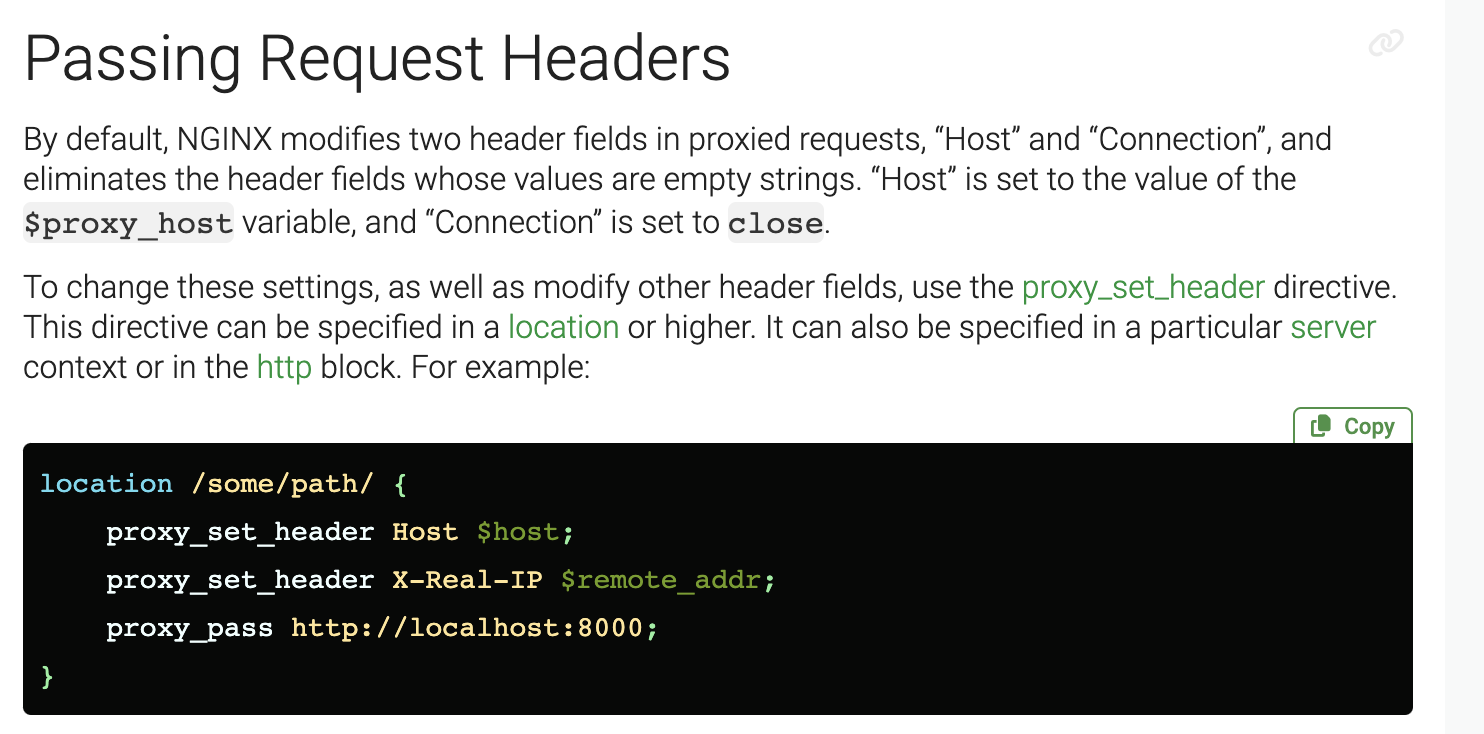Docker Networks and Nginx Reverse Proxy Pitfalls
Preamble
A couple of weeks ago, I colleague of mine called me up to assist with a reverse proxy setup he was working on with nginx and docker services, oddly enough, this isnt the first time I've seen persons struggle with debugging this problem, this article is for anyone who has the same problem.
Introduction
Docker is such a great tool, I have a hard time remembering what shipping was like before docker, uploading zip files via FTP servers and refreshing like a mad man seems like a fever dream now.
There's no doubt how revolutionary Docker is/was to kick starting DevOps culture and DevOps practices overall, however as with many new paradims, as we solve one class of problems, another class of problems arise.
Im reminded of this hilarious Kubernetes gif.

Docker, by extension, is a bit like this, but I'm not here to gripe about the cloud landscape lol, that's for another time.
Anyways! That's not why you're here! You are here because you've been pulling your hair out because your containers CANT see each other or you're wondering "WHY is nginx NOT routing traffic to my containers". Fret not, I have a couple of tips for you.
Docker Compose and Docker Networks
Ok, so let's establish some basics:
Docker Compose creates its own network by default, this means
that once you run docker compose up -d, compose will automatically create a network with the services you described in your yaml file.
Take for example, the following compose file
version: '3.8'
services:
webapp:
build: ./webapp
container_name: webapp
ports:
- "3000"
environment:
- NODE_ENV=development
- API_URL=http://api:5000
depends_on:
- api
- db
volumes:
- ./webapp:/app
- /app/node_modules
api:
build: ./api
container_name: api
ports:
- "5000"
environment:
- FLASK_ENV=development
- DATABASE_URL=postgresql://user:password@db:5432/mydb
depends_on:
- db
volumes:
- ./api:/app
db:
image: postgres:13
container_name: db
environment:
- POSTGRES_USER=user
- POSTGRES_PASSWORD=password
- POSTGRES_DB=mydb
volumes:
- postgres_data:/var/lib/postgresql/data
ports:
- "5432:5432"
nginx:
image: nginx:latest
container_name: nginx
ports:
- "80:80"
- "443:443"
volumes:
- ./nginx/nginx.conf:/etc/nginx/nginx.conf
- ./nginx/conf.d:/etc/nginx/conf.d
- ./nginx/certs:/etc/nginx/certs
depends_on:
- webapp
- api
volumes:
postgres_data:
Ok, looks simple enough, right? Couple of API services, nginx as the entrypoint, you dont have to worry about urls and such, feeels great....
Why arent my requests reaching my services??
Your volumed in nginx configuration, might look something like this
server {
listen 80;
server_name localhost;
location / {
proxy_pass http://localhost:3000;
}
location /api/ {
proxy_pass http://localhost:5000/;
}
}
Your first instinct might be try pinging your services, which should work, but wait, you don't want to expose your services to external traffic, you want nginx to handle those. At this point, you might be tempted to go down the long rabbit hole of docker and it's DNS and Networking configurations, so let me save you some hours with this post.

Source: https://forums.docker.com/t/precedence-of-dns-entry-vs-compose-service-name/120967/3
Simply put, networking inside of a docker network works by service name, what this looks like in practice is something like this
server {
listen 80;
server_name localhost;
location / {
proxy_pass http://webapp:3000;
proxy_set_header Host $host;
proxy_set_header X-Real-IP $remote_addr;
proxy_set_header X-Forwarded-For $proxy_add_x_forwarded_for;
}
location /api/ {
proxy_pass http://api:5000/;
proxy_set_header Host $host;
proxy_set_header X-Real-IP $remote_addr;
proxy_set_header X-Forwarded-For $proxy_add_x_forwarded_for;
}
}
"Ok Ok slow down, I see the requests are changed now but what's with this proxy stuff?"
Correct, notice the urls are based off service names now and we also added some proxy configurations for nginx.
Nginx has some documentation on Reverse Proxy setup, so I'll save you another hour trying to find it.

Source https://docs.nginx.com/nginx/admin-guide/web-server/reverse-proxy/
If you want to pass your request headers (I'm asssuming you do for a myriad of reasons in your services) over to your services then you need to proxy them with these tags.
And Boom, you have a nifty, minimal set up for your docker services routed up correctly and continue shipping. Cheers!